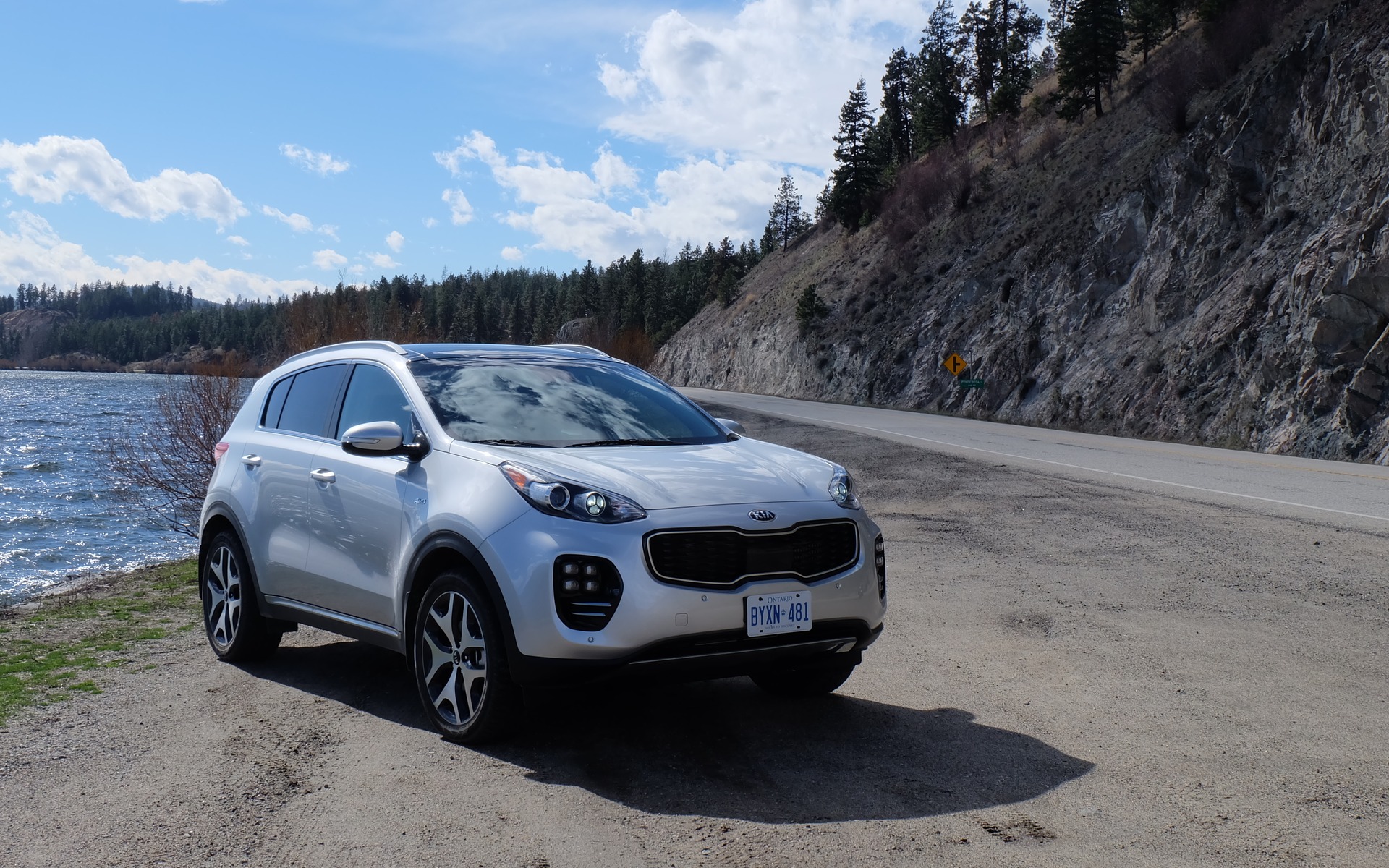2017 Kia Sportage: Threatening the Top Contenders

| Strong points |
|
|---|---|
| Weak points |
|
When Kia decided to revitalize its product line, the young Korean brand turned to Peter Schreyer, who was, at the time, designing new Audi vehicles. Schreyer took the job and agreed to give the brand’s cars and SUVs a new look, but only on one condition: if the overall quality was improved. He didn’t want his signature style associated with low-end vehicles.
Kia accepted and the first vehicle produced from this happy marriage was the 2008 Optima, a sedan that raised a few eyebrows. For the first time ever, a Korean car was able to compete with the Japanese cars that have led the segment for what seems like an eternity. Over the last five years, the quality of Kia products has improved by leaps and bounds.
And now the Sportage has once again been modernized. For 2017, this compact SUV has been completely updated, getting not only a new look – thanks to Peter and his team – but also a plethora of improvements aimed at catapulting it to the top of the heap.
We got to drive the 2017 Sportage in British Columbia. and went over it with a fine tooth comb.
Did it pass the test?
Unmistakable look
Firstly, the Sportage’s look is hard to miss. You either love it or hate it; there are no in-betweens. Gone are the slender and angular lines of the previous generation. Instead, muscular and organic shapes define its appearance. The headlights are now mounted high on the front end, and Kia’s Tiger Nose front grille is lower.
The Sportage’s sides rise toward the tail end, boosting the vehicle’s dynamic look. The big 19-inch wheels (on the SX trim) and the horizontal LED bar used as tail lights round out the youthful and singular look that Kia was aiming for. Although I love the new Sportage’s style, I’m not sure that it will stand the test of time. It’ll be interesting to see what its stylists do to keep the look the style fresh in three or four years.
I was disappointed to see that the rear turn signals were in the same spot as on the old version. They’re still located on the lower part of the bumper, separated by from the brake lights. In my opinion, this set-up makes it hard to predict the Sportage’s movements in traffic. Since your eyes generally aren’t riveted to on a rear bumper’s reflectors, it’s easy to be surprised by a manoeuvre that you didn’t expect.
The Sportage’s cabin will be familiar to anyone who has already peeked inside the new 2016 Kia Optima. The plastics are of very good quality, the vast majority of the surfaces that you touch regularly are made of rubber or leather, the seats are nicely upholstered – even the fabric-covered ones in the basic trims are comfortable and soft to the touch – and the buttons don’t look like they belong in a Fisher-Price catalogue.
Visibility is also improved, with blind spots reduced in comparison to the previous version. Thanks to structural improvements, the 2017 Sportage is 39% more torsion resistant. According to Kia, they used 103 metres of structural adhesive to strengthen the chassis. Obviously, all of that improves safety, but it also enhances soundproofing. The Sportage’s quality is now as good as any other vehicle in its class, easily passing certain Japanese cars that rested on their laurels.
The S in SUV
Just in case some of its competitors have forgotten, SUV stands for Sport Utility Vehicle. And that’s where the Sportage really impressed me. Its suspension has been modified in several ways, making it now sportier than the one in the Hyundai Tucson (these two models share various components). Without going into the technical details, Kia spent a lot of time on the little things that make driving pleasant: you can take a corner enthusiastically without the vehicle swaying and the power steering is livelier. The steering wheel is less soft too, which is uncharacteristic of this type of assisted steering.
There are two engines available in Canada: the basic trims get a 2.4-litre that generates 181 horsepower and 175 lb.-ft. of torque, while the SX comes with a 2.0-litre turbocharged mill that delivers 237 horsepower and 260 lbs.-ft. of torque. The turbo is obviously more fun to drive, but the 2.4-litre is more than sufficient for your everyday needs. The only available transmission is a six-speed automatic.
Front-wheel drive comes factory standard on all trims, with the exception of the SX. However, Kia expects 70% of buyers to opt for all-wheel drive. This system responds in real time to send the torque to the wheel that needs it the most. In normal conditions, it sends 95% to the front axle.
At low speeds, you can simulate a locking centre differential at the push of a button and send 50 % of the torque to each axle. Sure, it won’t turn the Sportage into a Jeep Wrangler, but it’s good enough for poorly maintained forest roads or to get yourself out of a snow bank!
Destined to dominate?
Kia has made dazzling progress these last few years. The manufacturer went from being a peddler of cheap cars to a serious competitor in all segments where it’s represented. With the brand new 2017 Sportage, Kia is likely to elbow in on sales of vehicles like the Honda CR-V, Toyota RAV4 and Mazda CX-5.











